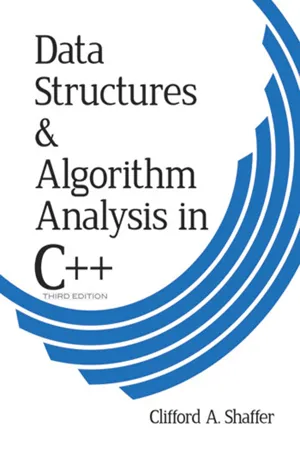
- 624 pages
- English
- ePUB (mobile friendly)
- Available on iOS & Android
Data Structures and Algorithm Analysis in C++, Third Edition
About This Book
With its focus on creating efficient data structures and algorithms, this comprehensive text helps readers understand how to select or design the tools that will best solve specific problems. It uses Microsoft C++ as the programming language and is suitable for second-year data structure courses and computer science courses in algorithm analysis.
Techniques for representing data are presented within the context of assessing costs and benefits, promoting an understanding of the principles of algorithm analysis and the effects of a chosen physical medium. The text also explores tradeoff issues, familiarizes readers with the most commonly used data structures and their algorithms, and discusses matching appropriate data structures to applications. The author offers explicit coverage of design patterns encountered in the course of programming the book's basic data structures and algorithms. Numerous examples appear throughout the text.
Frequently asked questions
Information
PART I
Preliminaries
1
Data Structures and Algorithms
- To design an algorithm that is easy to understand, code, and debug.
- To design an algorithm that makes efficient use of the computer’s resources.
1.1 A Philosophy of Data Structures
1.1.1 The Need for Data Structures
- Analyze your problem to determine the basic operations that must be supported. Examples of basic operations include inserting a data item into the data structure, deleting a data item from the data structure, and finding a specified data item.
- Quantify the resource constraints for each operation.
- Select the data structure that best meets these requirements.
Table of contents
- Title Page
- Copyright Page
- Table of Contents
- Preface
- PART I - Preliminaries
- PART II - Fundamental Data Structures
- PART III - Sorting and Searching
- PART IV - Advanced Data Structures
- PART V - Theory of Algorithms
- PART VI - APPENDIX
- Bibliography
- Index